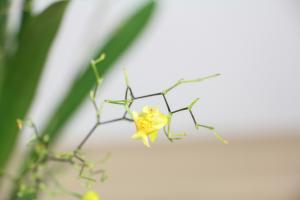What is Water Balance in Plants?
Water is an essential resource for the survival and growth of plants. It is used for various physiological processes, such as photosynthesis, transpiration, and nutrient uptake. However, like all living organisms, plants face challenges in maintaining a suitable balance of water within their cells and tissues. This balance is known as water balance, and it is critical to the health and growth of plants.
Transpiration and Water Absorption
Transpiration is the process by which plants lose water through evaporation from their leaves. This process is essential for maintaining water balance, as it removes excess water from the plant's tissues. However, if the rate of transpiration is too high, plants may lose too much water and become dehydrated. To prevent this, plants have developed various mechanisms for regulating their rate of transpiration, such as closing the stomata (tiny openings on the leaves) during the hottest part of the day.
Water absorption is the process by which plants take up water from the soil. This process is essential for maintaining water balance, as it replenishes the water lost through transpiration. Plants absorb water through their roots, which have tiny root hairs that increase the surface area available for water uptake. The rate of water absorption depends on various factors, such as the water content of the soil, the presence of nutrients, and the root's ability to penetrate the soil.
The Importance of Water Balance
The balance of water within a plant's cells and tissues is critical to its survival and growth. If a plant loses too much water through transpiration, it may become dehydrated and wilt. If it absorbs too much water, it may suffer from waterlogging, where the water-filled spaces in the soil reduce the amount of oxygen available to the roots. This can lead to root rot and other diseases.
More importantly, water balance affects a plant's ability to carry out essential physiological processes. For example, photosynthesis, the process by which plants convert sunlight into energy, relies on the availability of water. If a plant lacks water, its photosynthetic rate may decrease, leading to reduced growth and productivity.
Water Balance and Adaptation
Since plants are sessile organisms, they face significant challenges in adapting to changes in their environment, particularly changes in water availability. In response, plants have evolved various adaptations to maintain water balance, even in harsh conditions such as drought or flooding.
For example, succulent plants, such as cacti, have thick, fleshy leaves and stems that store water, allowing them to survive in arid environments. Other plants, such as lotus, have the ability to withstand waterlogging by developing aerenchyma, specialized tissue that allows for the exchange of gases between the roots and the atmosphere.
The Challenge of Water Balance in Agriculture
Water balance is a significant challenge in agriculture, particularly in regions that suffer from water scarcity or drought. Farmers must manage their water resources carefully to ensure their crops receive enough water without wasting it. Irrigation systems, such as drip irrigation, can help reduce water loss, but they can also be expensive and require significant investment.
Plant breeding and genetic engineering offer promising avenues for developing crops that are better adapted to water stress, such as drought-tolerant varieties. However, significant research is needed to develop crops that can maintain water balance and productivity under varying environmental conditions.
Conclusion
In conclusion, water balance is a critical aspect of plant growth and survival. Plants face significant challenges in maintaining this balance, particularly in response to changes in their environment. Understanding water balance is essential for agriculture and food security, as well as for developing crops that are better adapted to changing climatic conditions.

 how many times do yo...
how many times do yo... how many planted tre...
how many planted tre... how many pine trees ...
how many pine trees ... how many pecan trees...
how many pecan trees... how many plants comp...
how many plants comp... how many plants can ...
how many plants can ... how many plants and ...
how many plants and ... how many pepper plan...
how many pepper plan...































